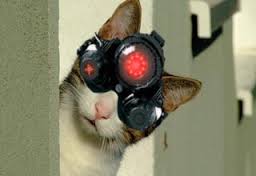 Every story features a character whose actions or inactions influence not only that character but those around her. In the best stories, these influences ripple outwards, to the character’s community, her ethnic group and out to the universe. These multi-layered stories tend to elicit the deepest reader emotional response.
Every story features a character whose actions or inactions influence not only that character but those around her. In the best stories, these influences ripple outwards, to the character’s community, her ethnic group and out to the universe. These multi-layered stories tend to elicit the deepest reader emotional response.
Writing Tip for Today: Writing multi-layered fiction means creating stories that are not only wide, but deep. Here are easy ways to test your story for depth:
Raise Stakes
One easy way to ensure your story has the depth necessary to draw out reader emotion is to examine the stakes of the story. We’ve discussed before the idea that your character must want something desperately and must face significant obstacles to obtaining that want. Don’t know if your story has high enough stakes? Take the SO WHAT? Test: If my character doesn’t get what she wants (the goal), then so what? What’s the worst thing that could happen? If your answer is that character will be sad, think of a way to raise the stakes more. Give your story character a goal which, if not obtained will not only seriously impact the character, but one that will ripple outwards and affect as many people as possible. For instance, in To Kill a Mockingbird, Scout is the primary character affected by the trial, but the entire town’s way of life is threatened, and by extension, the Southern way of life and the way all of us view the “different.” If you write a story where a scientist must stop a pandemic, it’s easy to see that the scientist’s goal will affect the entire planet if he fails. By layering the realms that the story will influence, you create a much stronger felt-need for the reader and heighten his emotional reactions to your story.
Desire v. Motivation
A reader recently asked me about the difference between desire (want, goal) and a character’s motivation. Desire refers to the actual situation which is acted out in scenes. Motivation is basically your character’s back story. All the slights, hurts and other experiences that drive your character toward this present-day goal at all costs. If your character wants to find true love but is afraid of being burned, we know it can’t be made easy or else readers will shrug and say, “So what?” But if you weave in the motivating back story that she was burned by a two-timing cowboy, now readers see why she is so reluctant. Your character’s WHY (motivation) determines the HOW (present-day grasping for goal or desire). Strong goal and strong motivation equals strong story.
Draw it Out
When you create a multi-layered story, you must learn to balance all the elements. You’ve already heard that too much back story ruins the scenes, so learn to weave motivation into the real-time scenes. Readers’ preferences for tight viewpoints rather than omniscient can leave you as the writer less able to see whether your stakes and motivation have that ripple effect. Using penciled circles, try drawing out the concentric rings, with your protagonist at the center. Then add wider circles of how your character’s goal will affect the family and/or friends, the community and so on. The more rings of influence you have, the more you’ll be able to draw out your reader’s emotional reactions to your story.





Great advice, Linda. Thanks for another excellent post.
Pingback: Writing High Stakes Stories - Linda S. Clare